Our last and final stop in Cambodia was Battambang. Despite being the second most populous city in Cambodia, it still seemed small (only 190,000 people) and there wasn’t much to do in the city itself. Battambang appeared to have a 10pm curfew, after which there was not a single lost soul around. All places were closed and the roads pitch dark. We were caught by surprise when we tried to find a restaurant after 10pm on a Thursday. The only place we found open was a restaurant that played Brazilian bossa nova the entire time (coincidence?). The food was good though.
Of course we didn’t come to Battambang for the city, but instead for the amazing countryside. To get around, we booked a tuk-tuk for the day ($18 after some negotiations) and we were off for some fun!
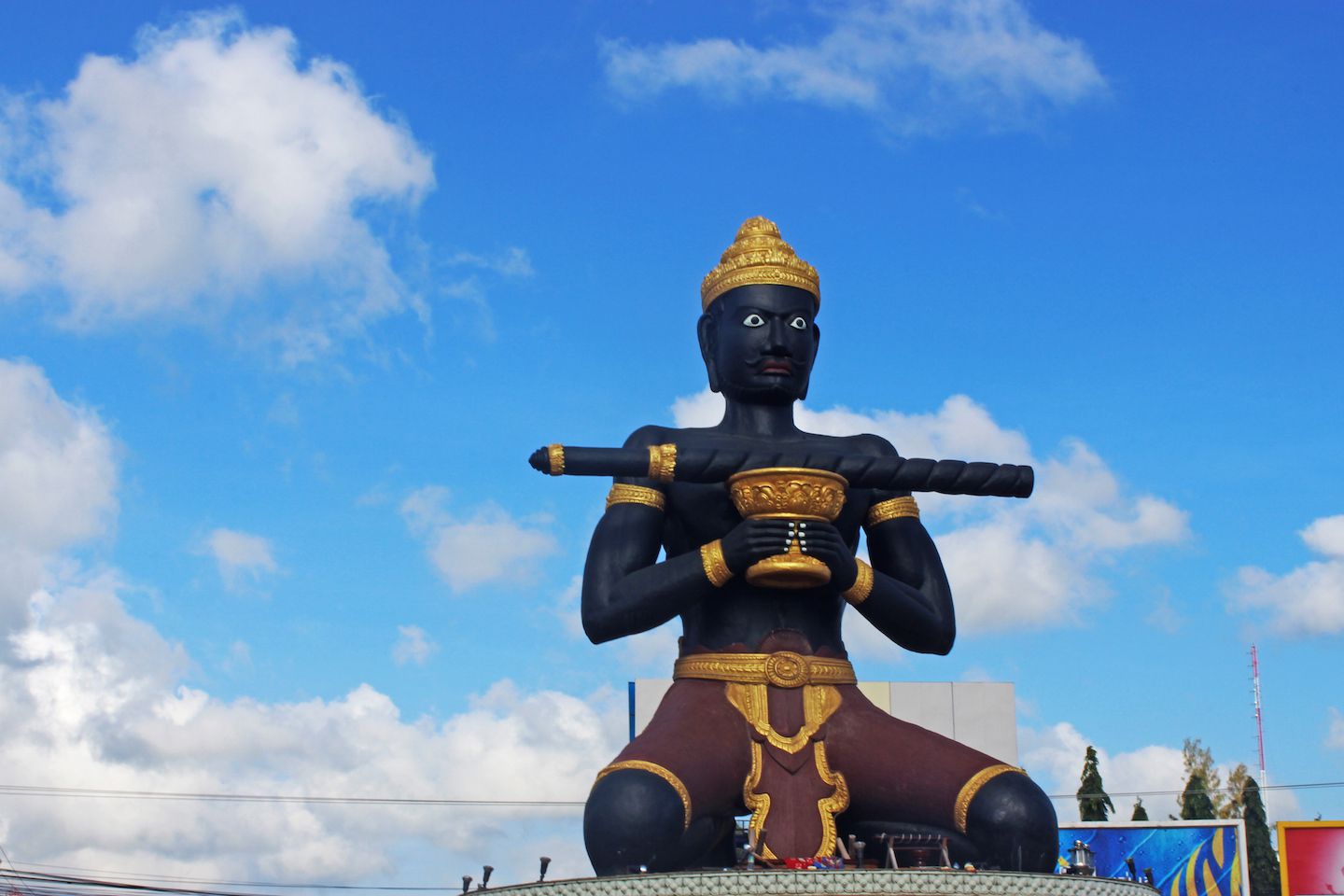
Bamboo Train
More of a bamboo flatbed on wheels, powered by a small 6HP engine, the Bamboo Train ran on the railroads on the outskirts of Battambang and it was an attraction doomed to end, or at least that was the word on the streets. The government has plans to renew its railroads from the border with Thailand to Sihanoukville, killing the Bamboo Train in the process. This project, however, was supposed to be completed several years ago, and it still didn’t even start, so I guess there’s no rush.

After paying the policeman the $10 fee for both of us (the fee has been regulated, due to many scams), we sat on our cushioned pillows and tried to grab on whatever we could as the train sped up (these things go up to 40 km/h!). The 7km ride until the next station provided beautiful views of the countryside, but it was also very loud and bumpy with a few insects and bushes hitting us along the way.
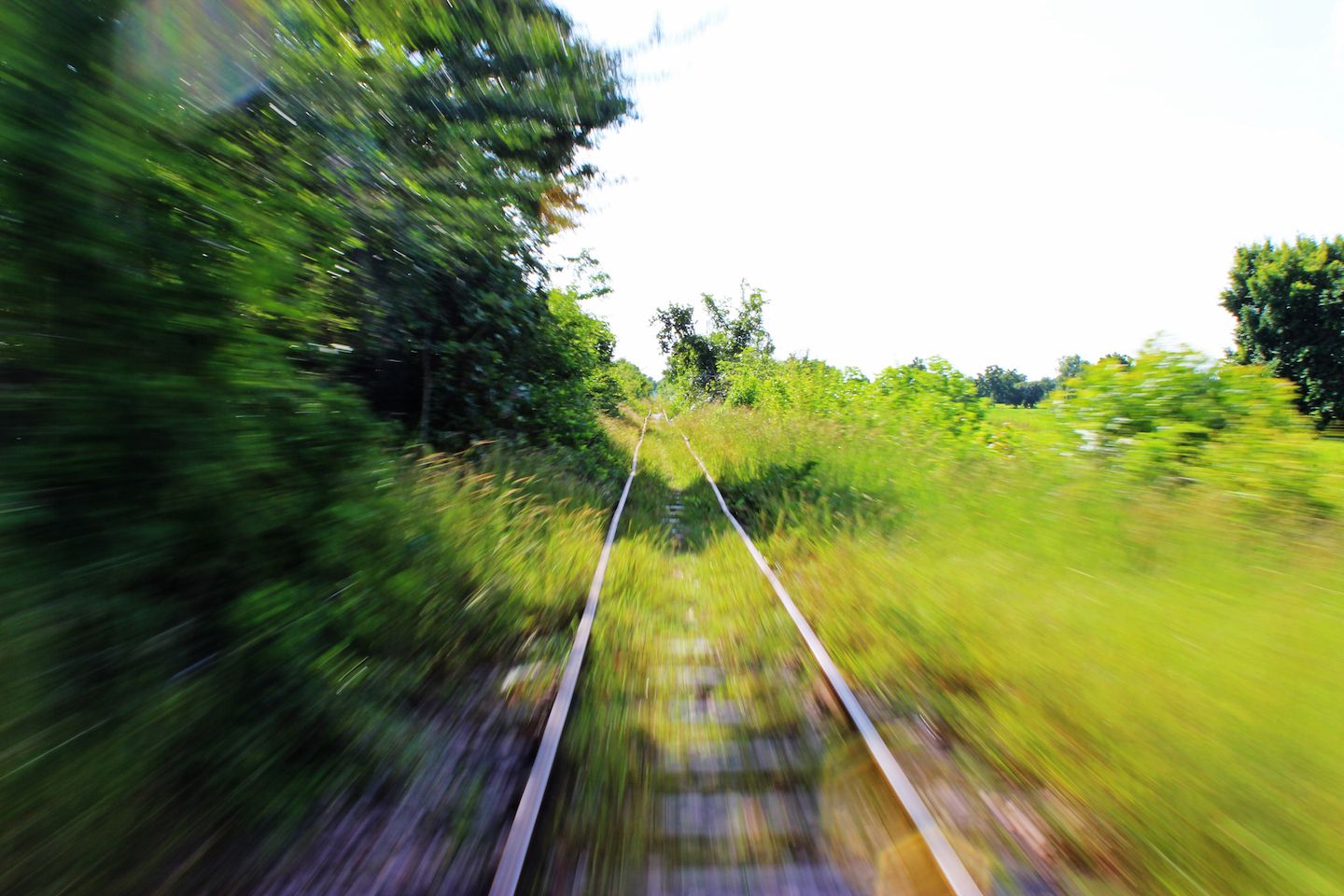
At the end of the ride, a small tourist-oriented village awaited us with a lot of street vendors (mostly young kids) who tried to sell you everything, from drinks to clothes to scarves. Apparently a 20 min stop was mandatory there as our driver pretended to “fix” the “broken” engine. We had a nice chat with one of the street vendor kids though, who despite being only 9 years old spoke better English than I did when I was her age.

After our “train” was ready again, we hopped on to head back. The way back was congested and we had to stop several times to move the oncoming trains out of the track. By move, I mean actually disassembling the 3-part train and putting it on the side of the track to clear the way for us.

When we got back, there were also constant requests and people trying to guilt us on tipping our driver, requests that we just ignored (after reading online about the scams) and we headed straight towards our tuk-tuk driver without looking back.
Fishing Village
We visited one fishing village in the area and while I thought it was very interesting to learn more about the local economy and culture of the village, I also felt extremely sad about the way they were doing it. The villages around Battambang were very underdeveloped and highly dependent on their crops and fish that were sold in the city markets.
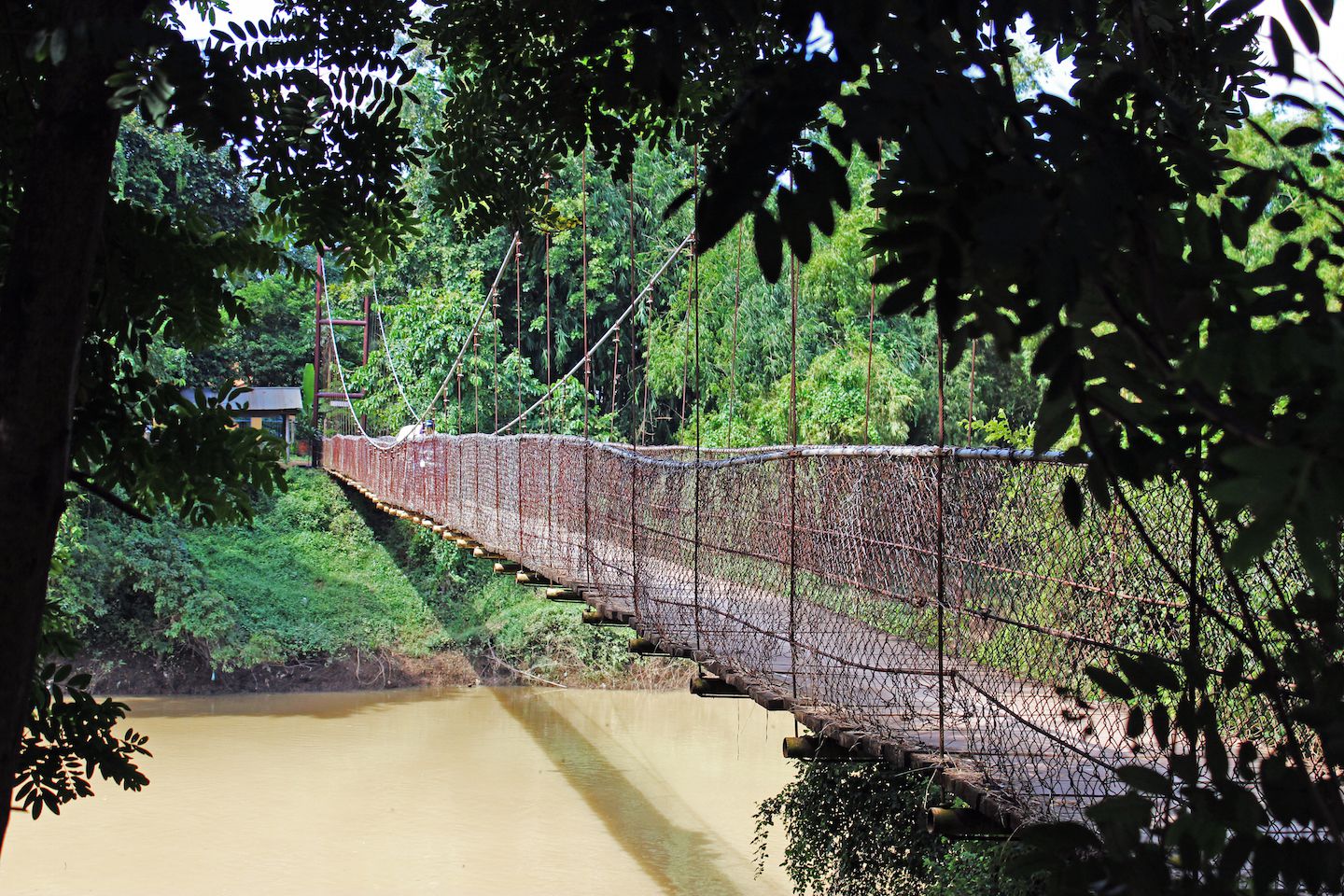
We first spotted a few people filling a basket with dried branches and submerging it in the river. The basket was left there and taken out on the next day, with fish caught among the branches. I’ve never seen people fishing like that, but no big deal. Walking a bit further was where the serious stuff started. The riverside was packed with nets (used as a temporary storage for the day) and fishing boats.

We asked our tuk-tuk driver questions about the village itself and the logistics of fishing, until he pointed at one of the boats coming upstream, dragging a huge fishing net that spanned river-wide. After stopping next to its designated storage net on the riverside, it unloaded all the fish it caught (about 15kg) and went on again for another sweep, while other boats were doing the same.
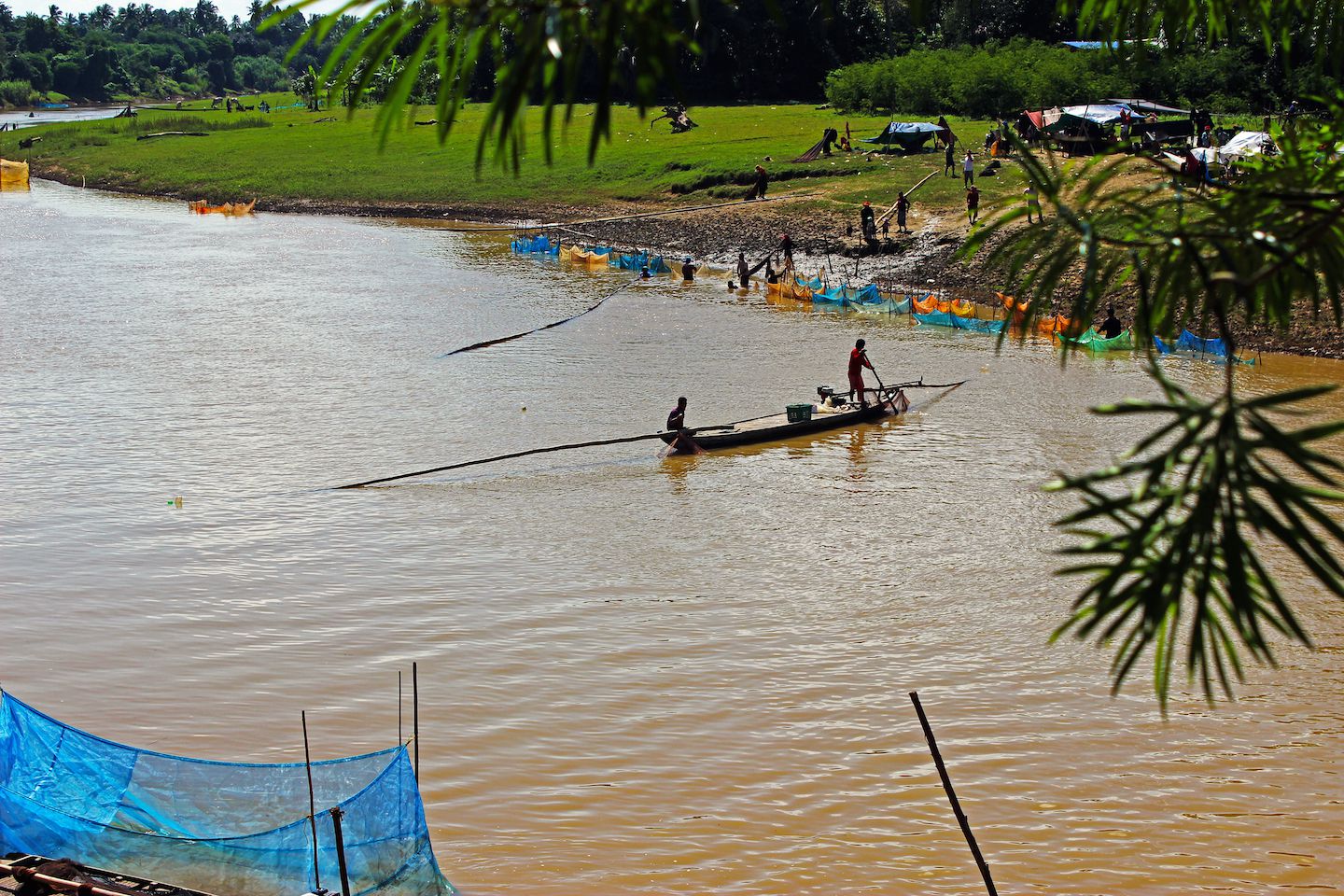
According to our driver, only five years ago, this same method used to catch to fish would, in one sweep, catch 200kg of fish. Evidently the fish was being caught above its reproduction rate, thus impacting the whole fish catch for the village.

Upon asking about government regulations, like permits or fishing licenses, the driver answered that the government regulates the fishing, but people just paid (some sort of a bribe) and kept doing it. It was clear what they were doing was unsustainable. The future of the village will not be very bright if they continue to exhaust and drain their resources like this.
Wat Banan & Fruit Bats
Another temple built during the Angkor period, Wat Banan sat on the top of a hill, some 350 (really steep) steps up.
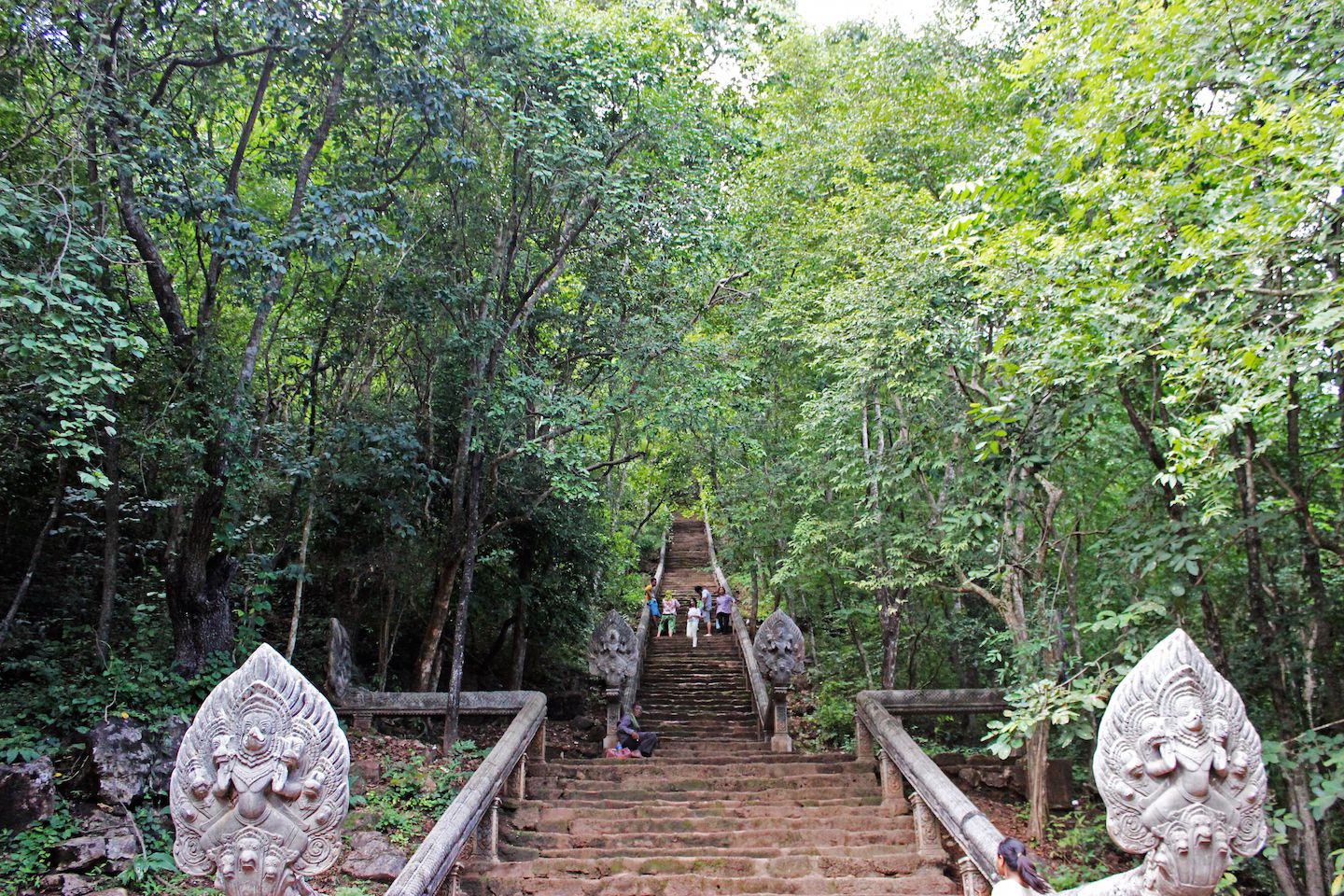
Just like the other temples visited at Angkor, traces of laterite stone, detailed carvings as well as a five tower top could be found here. Honestly, after learning about all the different temples in Angkor Archaeological Park, this one didn’t really excite us as much, and we kind of felt like experts on analyzing the temple, its construction methods and the likes.
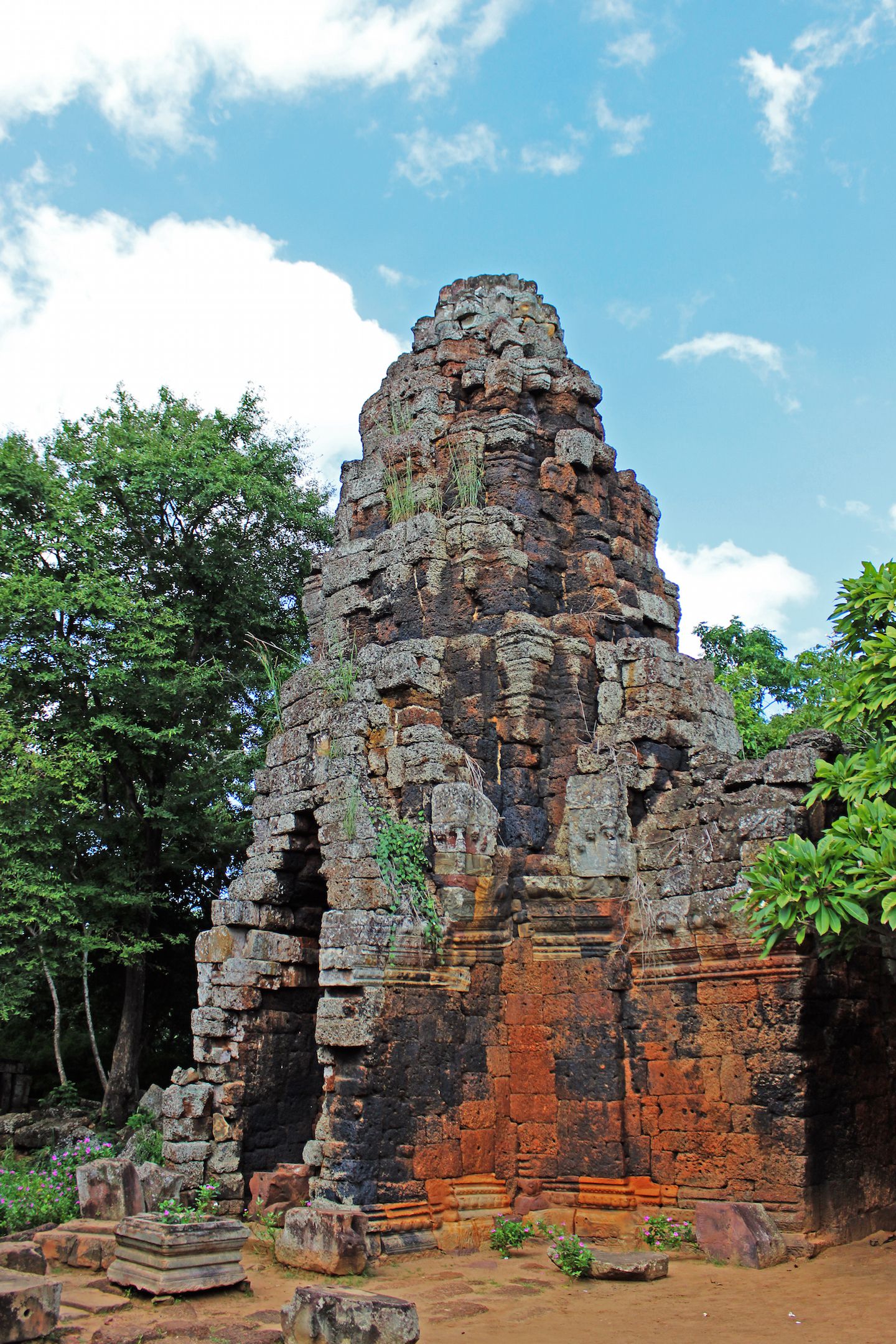
One interesting and very strange fact was that close to the temple, there were two trees (out of the many around) packed with fruit bats. Hundreds of them screeching and flying around looking for food during daylight. Unfortunately the lens we were carrying couldn’t zoom in enough to get a good close-up photo. But here is the best we could do.
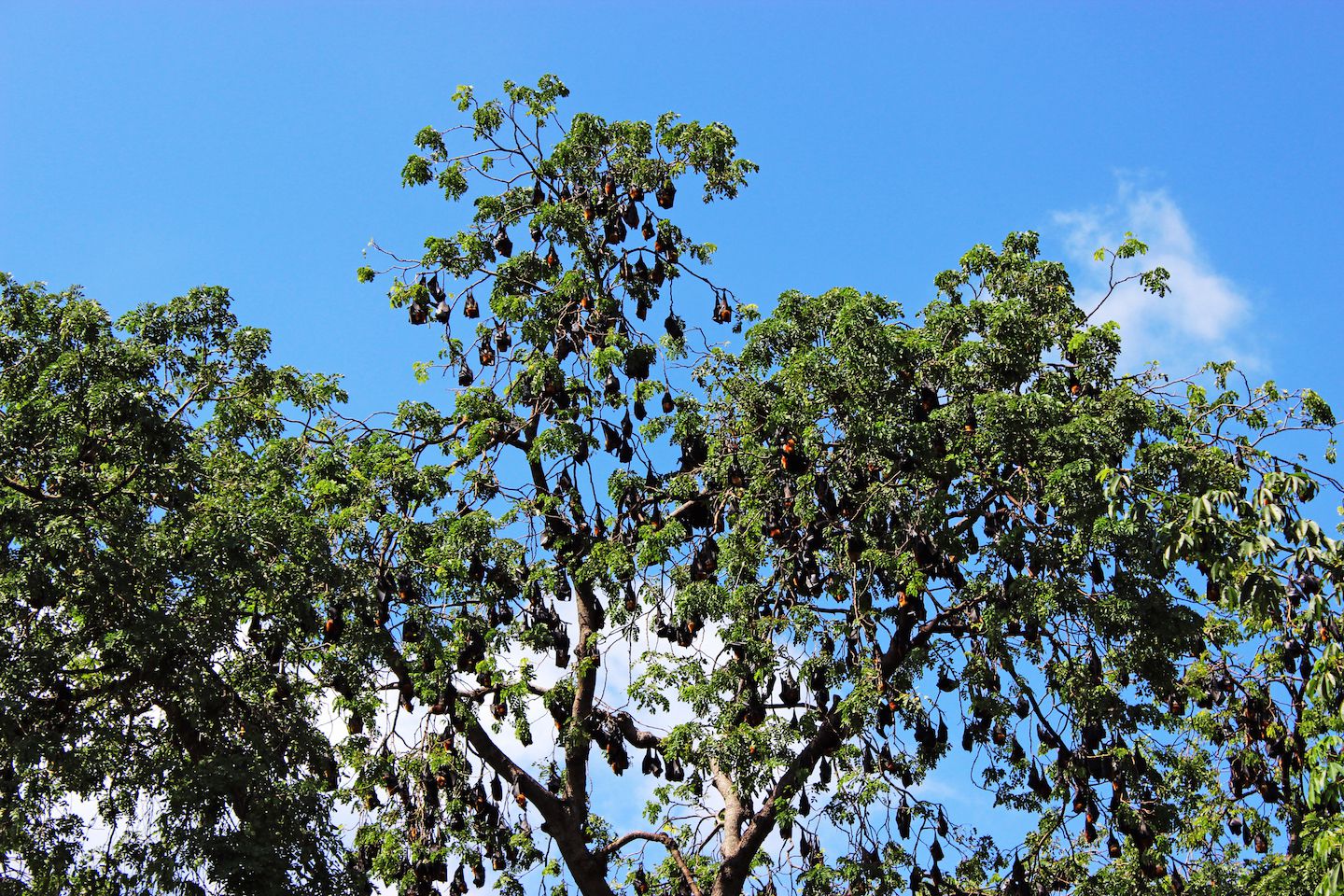
Killing Caves of Phnom Sampeou
Overlooking the countryside and the city of Battambang in the distance, Phnom Sampeou was a hill filled with extremely dark stories. It served as a killing spot for the Khmer Rouge during Pol Pot’s regime. Similar to the killing fields in Phnom Penh, those who were considered to be spies and enemies of the regime were killed and thrown into the caves.
The journey up to the caves was over 700 steep steps (pretty tiring) that used to be dangerous with the numerous landmines that were planted in the area (now it’s safe). We got to the top of the hill but there were no signs of caves, only temples and more temples. There was a nice view of the flat lands far into the distance.

We were determined to make our way to the killing caves, thus we started asking around, but none of the tourists knew the exact location and the locals were also not trustworthy. After following the directions one other tourist gave us, we ended up walking into several monkeys on the road. They seemed pretty used to the presence of humans. From moms carrying their baby monkeys to what seemed to be a fight between monkey tribes, we saw it all and spent quite some time just having fun with them.

Once we decided we had had enough monkey interactions for a day, we were back on track for the killing caves, only to arrive at another temple area with nothing but Buddha statues and people praying. We explored the area a bit more and found some caves we thought were the one we were looking for, except this cave also turned out to just be a Buddhist temple.

It was already getting late in the day and still no signs of the infamous killing caves. We asked for information from one of the vendors and (after buying a drink) she pointed us in the right direction. Along the way, we confirmed the directions with another couple of tourists who had been to the caves and in a few minutes we finally arrived.

The descent into the caves was tense and the atmosphere heavy. Human remains can still be found – you could see an abnormally large number of flies and insects coming in and out of the cave. Next to the stairway that led into the deeper parts of the cave, a sanctuary with skulls and bones was raised to honor the memory of those who lost their lives here. The whole experience really makes you reflect on the atrocities that took place here and the decency of the human race.
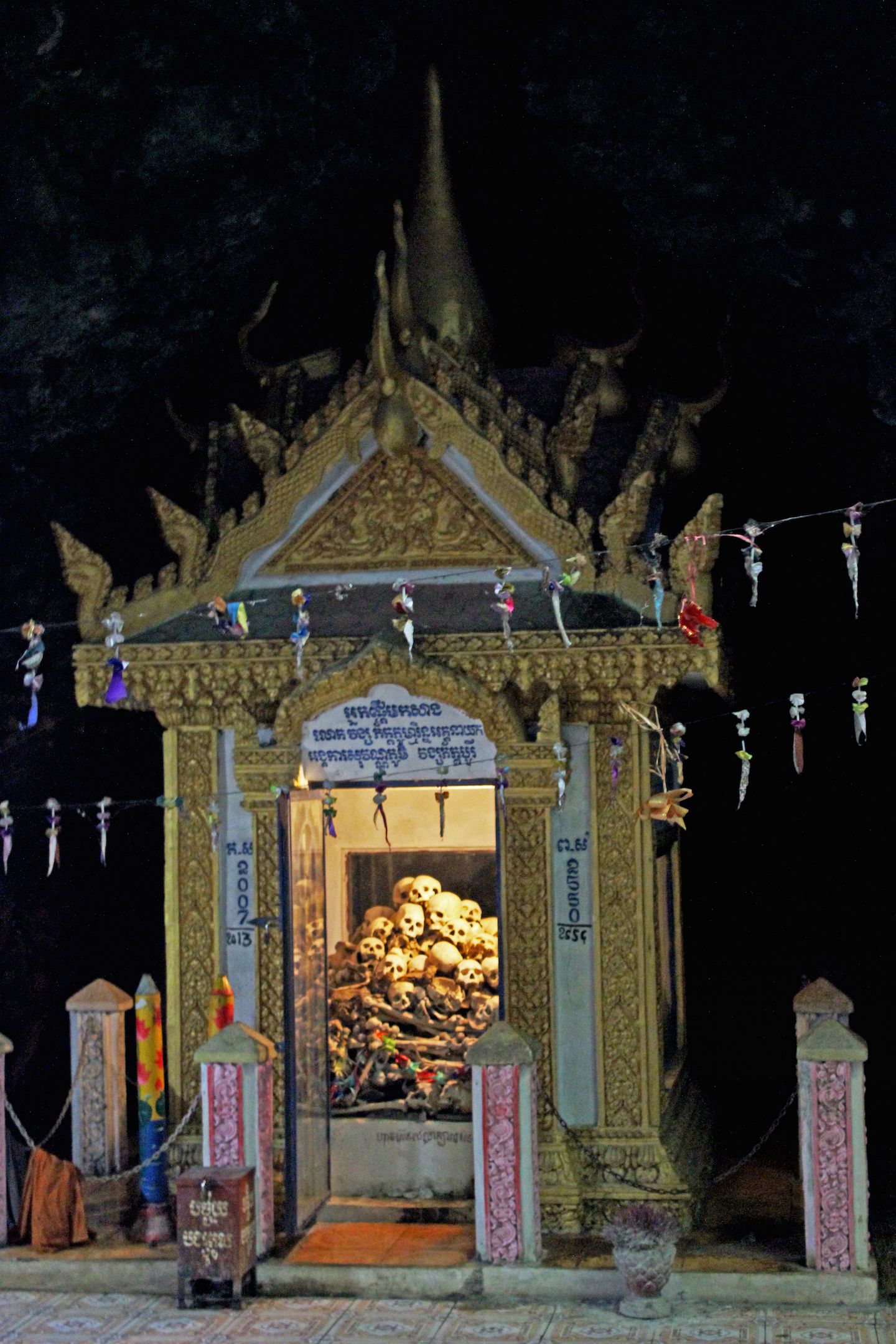
After leaving the caves, we made our way down to our tuk-tuk and back to the city. Battambang was worth the visit for its surrounding area, with open landscapes, strange things (bamboo train and fruit bats) and history.
For more pictures from Battambang, please visit the gallery!

